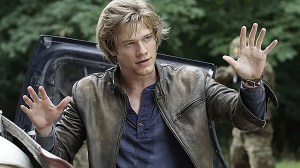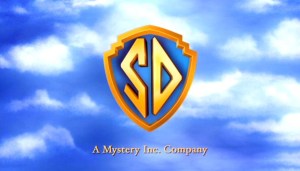Doctor Strange in the Multiverse of Madness catapulted its way into theaters this past weekend, taking the events of the Marvel Cinematic Universe into a surprising new territory. As the title suggests, the film finally kicks the door open in terms of introducing the Marvel multiverse, and uses that storytelling trope to introduce elements that fans have wanted to see onscreen for quite some time, from narrative concepts to character cameos. That was especially the case with the film’s iteration of The Illuminati, which not only included the returns of Patrick Stewart as Professor X and Anson Mount as Black Bolt, but finally canonized John Krasinski as Reed Richards after years of fans wanting him to play the character. While speaking to ComicBook.com about the film, Multiverse of Madness screenwriter Michael Waldron addressed if there was any pressure to balance that “fan service” with what the story of the film actually needed.
Videos by ComicBook.com
“Of course, I guess,” Waldron revealed. “It’s easy to be seduced by the cheap laugh, the cheap cheer, whatever. But that’s never what Marvel or Sam [Raimi] were interested in. It was always about what’s right for the story, what’s right for Steven Strange, what’s right for Wanda. It was never about fan service, really. It was like, ‘If these Illuminati characters are here, they should be here because that’s who’s in the Illuminati in the comics, and that’s who would actually be in the Illuminati.’ That was our north star.”
Waldron also spoke about the challenges of condensing the comic multiverse — which can get incredibly complex in particular stories — into a single two-hour film.
“You don’t want to overwhelm the audience,” Waldron explained. “It can easily buckle under all of that. In addition to the multiverse, this is a continuation of Wanda’s story. It’s a continuation of Steven’s story. It’s not a show like Loki, where we had time to really live in these moments and explain them and slow play our explanation of all this stuff. We had to move fast. It’s about keeping it focused on the character, and trying to find the heart of it. The route that we took, I thought that the most interesting version of a multiverse story would actually be to fully invest in the reality of one alternate universe — go there, really feel like it was a real place, with real stakes and real characters and histories and everything. As opposed to what we did on Rick and Morty, which is more ‘you hop from universe to universe’, and it feels a little more fast-paced and comedic. We wanted to feel like the multiverse and the MCU, these are real places. That was what we tried to render on screen.”
Doctor Strange in the Multiverse of Madness is now playing in theaters.








